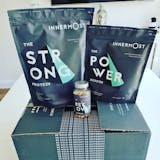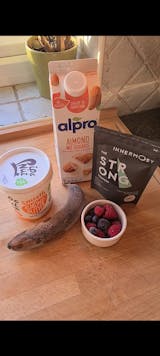With increasing evidence showcasing the beneficial impacts of hybrid training on the body, it’s no surprise to see increasing discussion around CrossFit exercise at the moment and for good reason.
What once started as a simple workout concept has now grown to engage entire open workout communities; all with one goal – building a supportive and multidisciplinary workout. With more than 15,000 affiliate CrossFit gyms across the world and over 500 in the UK, you’d probably assume everyone knows what the workout involves and how you can get started right?
Well…
Despite its popularity, CrossFit still remains one of the most misunderstood workouts around. Asking someone to explain its meaning will 9 times out of 10 give you a long ‘uhh’ followed by words like “tough”, “intense” and “athletic”. It’s this idea it’s only for athletes that can make starting so intimidating.
What if I instead told you that CrossFit offers a full-body workout for everyone – especially those looking to begin their fitness journey? We at Innermost have prepared this all-in-one guide to clear up a few misconceptions and make the prospect of getting started a breeze.
What is CrossFit?
So what exactly is CrossFit?
The short answer: CrossFit is a high-intensity hybrid fitness program that mixes elements of different exercises like weightlifting, gymnastics, and cardio to improve overall fitness across all areas.
Unlike strength training and cardio exercises that target specific muscles in the body, CrossFit aims to build entire body muscle mass through sequential high-intensity workouts.
Established in 2000 by Greg and Lauren Glassman, CrossFit workouts are also entirely flexible to the individual and as such no two workouts are the same. While training will be tough, you and your trainer can create perfectly scaled CrossFit workouts to improve your relative fitness. CrossFit even adds free WOD CrossFit workouts to their website each day aimed at improving strength, endurance, and technique.

These alterations could be based on the duration, type, speed, load, and frequency of your training. You will thrive in a genuinely varied but personalised training program that is crafted to improve your functional strength and conditioning.
It’s also important to remember that CrossFit improvement is based just as much on diet and nutrition as the training itself. By pairing your workout with supplements like Innermost’s The Fit Protein you will be able to push your workouts comfortably further than most.
The principles of CrossFit
Constantly varied workouts
The basis of CrossFit, constantly varying your workout, ensures that the entirety of the body is benefiting from your routine and minimises the potential of a workout rut by keeping you constantly challenged.
High-intensity workouts
CrossFit workouts are designed to be performed at high intensity and tailored to an individual's abilities. This helps to improve cardiovascular fitness, build muscle, and burn calories.
Functional movements
CrossFit focuses on functional movements that mimic real-life activities, such as squatting, lifting, pushing, and pulling. This helps to improve overall strength, power, and coordination.

Benefits of CrossFit
Whether you’re looking to lose weight, keep fit, or build muscle, it’s no surprise to say that CrossFit workouts have plenty of benefits. This is because the variety of functional high-intensity exercises within each session allows for positive physical effects all across the body. CrossFit functional workouts benefit these 10 core fitness areas:
- Cardiovascular endurance – The high-intensity nature of CrossFit workouts can significantly enhance your heart and lung function.as well as your ability to gather oxygen.
- Stamina – CrossFit workouts often combine strength training with metabolic conditioning exercises like running, rowing, or jumping rope. This combination improves your body's ability to utilise different energy systems, enhancing your overall stamina.
- Strength – By incorporating various exercises like weightlifting, gymnastics, and metabolic conditioning, CrossFit helps build your muscle’s ability to apply force.
- Flexibility – Many CrossFit movements, such as squats, lunges, and overhead presses, require a good range of motion, maximising the motion of your joints.
- Power – Like the strength benefits, CrossFit workouts improve the speed to which you can apply maximum muscle power in the quickest time.
- Speed – CrossFit can enhance speed by building strength, power, and explosive power through weightlifting, plyometrics, and HIIT while improving running form for greater efficiency.
- Coordination – CrossFit workouts ask for the use of multiple muscle groups as well as precise movements. This improves the body’s ability to merge multiple movements into a single motion.
- Agility – These exercises enhance agility by improving coordination, balance, and quickness through dynamic movements and constantly varied exercises. This minimises the transition time between your movements.
- Balance – By incorporating different strength and cardio training workouts into your routine you will improve your control over your body’s centre of gravity.
- Accuracy – CrossFit's focus on functional movements, performed with proper form, can improve accuracy in everyday tasks and athletic activities by enhancing coordination and control.
While this might sound like a lot, trust me, getting into it is not as complicated as it sounds. Most of these core tenets are built into CrossFit workouts, providing a diverse range of benefits for your body. With a strong sense of community within each gym, taking part in CrossFit can also greatly improve your mood and even mental health.

How to get started
Now you know why you should give CrossFit a go, you might be anxious about how exactly to start your workout routine. Remember, everyone has to start somewhere, so don’t go pushing too hard at the start before you can walk. With that in mind, here are a few key pointers to get started.
Preparation
First of all, get some appropriate training gear.
Those who try CrossFit training in standard Vans will quickly realise the need for versatile and durable footwear. Your cross shoes should be fully supportive of multiple movement patterns and applied forces. You also want to look for workout tops and bottoms that are fully adept at soaking up a sweat – the last thing you want is to be itching the whole time.
Finding the right gym
The next step is to find the perfect personal trainer and CrossFit gym. This is something unique to everyone. Will you be motivated more by a gym with a supportive or competitive culture? When do you want to attend and what is the standard of coaching like? Most CrossFit facilities provide a trial period which we recommend you use first to get a feel of whether the gym works for you.
Tailor your workout
Before the first workout, it’s a good idea to work out what you want to achieve. As previously mentioned, exercises are completely scalable meaning they can be tailored to you. Are you looking to build strength, endurance, or speed? Do you want to focus on concentric or eccentric exercises? Even if you’re recovering from injury, CrossFit can be altered to speed up rehabilitation rather than force you to push through the pain.
Track your progress
Getting started with CrossFit is all about having a journey-based mindset to develop ability and fitness. No one is reaching the stars on session 1, but by tracking your training ‘firsts’ and personal bests you’ll have added excitement and motivation to keep going from the get-go.
Tracking your progress from the start has also been scientifically proven to drive improvement in performance and goal attainment. We’d also recommend monitoring you’re nutrition and protein intake and looking at how it improves your workout. Consider adding one of Innermost’s many supplements such such as our Fit Protein Powder to your daily routine.

CrossFit Exercises For Beginners
For individuals just being introduced to the world of CrossFit, knowing which exercises and training plans to go with can feel intimidating. To make things easier for you, here are just a few workouts to try that are perfect for those at the start of their training.
Every Minute On The Minute (EMOM)
EMOM workouts are fairly self-explanatory but perfect for your development plans. These workouts see individuals deviate between start and rest exercise intervals while completing as many reps as possible. By measuring performance across a defined time period, progress and recovery can be closely monitored.
As Many Rounds As Possible (AMRAP)
While AMRAP exercises can be tough they make for the perfect introductory CrossFit workout. Essentially, it’s all about quick-time high-intensity aerobic exercise. The focus is pushing yourself to complete as many exercise reps as possible within a given time and monitoring your progress.
Ladder Workouts
Ladder workouts are also a good choice for CrossFit beginners, as they provide the best of both training plans. Instead of high-intensity or interval workouts, muscle workload is increased or decreased over a given amount of time. This change in muscle demand offers great benefits to speed and agility.
Power Your CrossFit workout with Innermost
Interested to learn more about Innermost The Fit Protein? Looking for the ultimate gym bag essentials? Maybe you want to share your own experiences of getting into CrossFit? Message us on our Instagram @liveinnermost.
References
- Wagenar, S., Hoppe, M., Hotfiel, T. et al. (2020). CrossFit® – Development, Benefits and Risks. Sportorthopa¨die-Sporttraumatologie. 36, 3. Click here.
- Giannaki, C, D., Grigoriou, S, S., George,. et al. (2023). Nine Months of Hybrid Intradialytic Exercise Training Improves Ejection Fraction and Cardiac Autonomic Nervous System Activity. Sports. 11, 4. Click here.
- Meier, N., Schlie, J., Schmidt, A. (2023). Physiological effects of regular CrossFit® training and the impact of the COVID-19 pandemic—A systematic review. Frontiers in Physiology. Click here.
- Harkin, B., Benn, Y., Sheeran, P. et al. (2016). Does Monitoring Goal Progress Promote Goal Attainment? A Meta-Analysis of the Experimental Evidence. Psychological Bulletin. 142, 2. Click here.
























